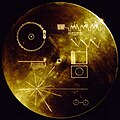Conductors
Over the decades, several noted conductors and soloists collaborated with the Columbia Symphony Orchestra including: [14] [15]
Alfredo Antonini
| External audio | |
|---|---|
Ernesto De Curtis's Torna A Sorriento (Come Back to Sorrento) in 1950 Here on archive.org |
From 1941 until 1971, Alfredo Antonini also served as a principal conductor of the CBS Symphony Orchestra while collaborating with noted soloists including Richard Tucker. In 1972 he was cited with an Emmy Award for conducting the orchestra in the television premier of Ezra Laderman's opera And David Wept. [16] [17]
Howard Barlow
in the later part of the 1930s, Howard Barlow joined forces with the orchestra which was known at the time as the CBS Symphony Orchestra within the Columbia Broadcasting System. [18] [19] Together, they recorded Deems Taylor's "Through the Looking Glass Suite", Op. 12. [20] By 1940, they joined forces once again in a recording of Bach's Air on the G String from the Suite No. 3 for Orchestra and the Bouree from Bach's Suite No. 3 for Unaccompanied Cello. [21] Additional recordings with the orchestra included: Franz Schubert's Symphony No. 2 in B flat major, D. 125 and selections from Engelbert Humperdinck's Hansel und Gretel Suite. [22]
Thomas Beecham
In 1949, Sir Thomas Beecham made a series of recordings in Columbia Records' 30th Street Studios in New York City with a completely different pickup group, which was also called the Columbia Symphony Orchestra. Later reissued by Sony on CD, the recordings include Dance of the Hours from the opera La Gioconda by Amilcare Ponchielli, the overture to The Merry Wives of Windsor by Otto Nicolai, Carmen Suite by Georges Bizet, and Capriccio Italien by Peter Tchaikovsky. [23]
Leonard Bernstein
| External audio | |
|---|---|
Ludwig van Beethoven's Piano Concerto No.2 in B Flat Major, Op. 19 in 1957 Here on archive.org |
Leonard Bernstein conducted the orchestra and also played the piano solos, in Maurice Ravel's Piano Concerto in G and George Gershwin's Rhapsody in Blue . These were released by Columbia in stereo on LP and later reissued by Sony on CD. In addition, Bernstein also joined forces with the orchestra in collaboration with Glenn Gould in a performance of Ludwig van Beethoven's Piano Concerto No. 2 in B Flat Major, Op. 19 and Johann Sebastian Bach's Keyboard Concerto No. 1 in D Minor, BWV 1052 for Columbia Masterworks in 1957 [24]
Fausto Cleva
During his tenure at the Metropolitan Opera in 1959, Fausto Cleva led the Columbia Symphony Orchestra and the noted tenor Richard Tucker in a recording of several popular arias by Giacomo Puccini. [25]
Aaron Copland
In the early 1960s, the composer Aaron Copland joined forces with the swing clarinetist Benny Goodman and the concert bass-baritone William Warfield to record his Clarinet Concerto along with his arrangement of "Old American Songs" in collaboration with the Columbia Symphony Orchestra. [26]
Robert Craft
From 1955 onwards, he made many recordings with the CSO, in CBS-projects that were intended to record the Second Viennese School for the first time integrally. In this period, Robert Craft also produced most of the Varèse works with the Columbia Ensemble.
Vladimir Golschmann
| External audio | |
|---|---|
Ludwig van Beethoven's Piano Concerto No.1 in C major, Op. 15 Johann Sebastian Bach's Keyboard Concerto No. 5 in F minor, BWV 1056 in 1958 Here on archive.org |
Vladimir Golschmann also collaborated with the Columbia Symphony Orchestra in several historic recordings with the young pianist Glenn Gould. Included among their collaborations were recordings of Johann Sebastian Bach's Keyboard Concerti: No. 2, No. 3, No. 4, No. 5 & No. 7, as well as the Beethoven Piano Concerto No. 1 during the 1950s. [27]
Alexander Schneider
| External audio | |
|---|---|
Wolfgang Amadeus Mozart's: Piano Concerto No.21 in C major, k. 467 Piano Concerto No. 27 in B flat major, K. 595 in 1957 Here on archive.org |
Alexander Schneider paired with Rudolf Serkin and the Columbia Symphony Orchestra during the 1950s in a recording of Wolfgang Amadeus Mozart's: Piano Concerto No. 21 in C major, K. 467 and Piano Concerto No. 27 in B flat major, K. 595. [28]
Igor Stravinsky
Igor Stravinsky made many recordings of his own compositions with an incarnation of this orchestra, mainly musicians from the Los Angeles Festival Orchestra founded by Franz Waxman. [29] Among the works in which Stravinsky conducted the orchestra are Apollon musagète ; Le baiser de la fée ; The Firebird – suite and complete ballet; Mass; Mavra ; Les noces ; Orpheus ; Perséphone ; Petrushka – suite and complete ballet; Pulcinella – suite and complete ballet; The Rake's Progress ; The Rite of Spring ; the Symphony in E flat; the Symphony in Three Movements and the Violin Concerto; as well as several shorter pieces. [30]
In 1977, a recording of the Columbia Symphony Orchestra playing the "Sacrificial Dance" from The Rite of Spring, conducted by Stravinsky, was selected by NASA to be included on the Voyager Golden Record, a gold-plated copper record that was sent into space on the Voyager space craft. The record contained sounds and images which had been selected as examples of the diversity of life and culture on Earth. [31] [32] [33]
George Szell
In the 1960s, George Szell also joined forces with the Columbia Symphony Orchestra and Robert Casadesus for a recording of several piano concertos by Wolfgang Amadeus Mozart including: Concerto No. 22 in E flat major, K. 482 and Concerto No. 23 in A major, K. 488 for Columbia Masterworks (ML5594, 1960). [34]
Bruno Walter
Among the best-known recordings the orchestra made were with the conductor Bruno Walter, who recorded interpretations of Beethoven, Brahms, Bruckner, Mahler and Mozart symphonies. With this orchestra, Walter made his only stereo recording of Mahler's Symphony No. 9, which he had conducted at its world premiere. [23]
